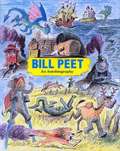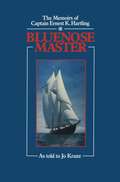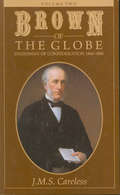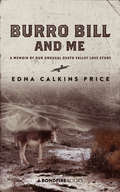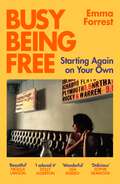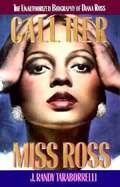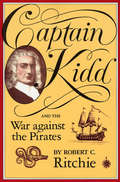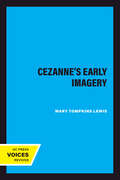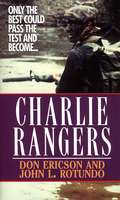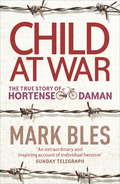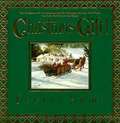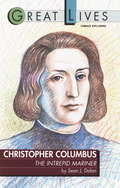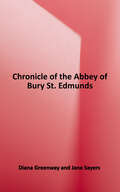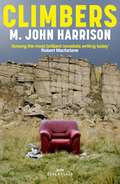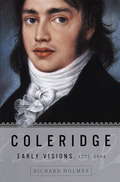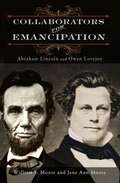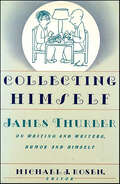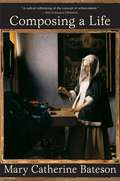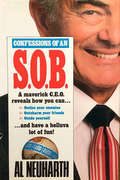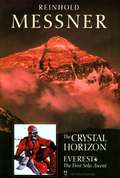- Table View
- List View
Bill Peet: An Autobiography
by Bill PeetBill Peet tells his life story, including his years with Disney.
Blue Nose Master: The Memoirs of Captain Ernest K. Hartling
by Ernest K. Hartling Jo KranzCaptain Ernest Hartling, born in Spanish Ship Bay, Nova Scotia, in 1906, takes us on a voyage through a life crammed with adventure, colour, and excitement.
Bonnie Prince Charlie
by Carolly EricksonBonnie Prince Charlie is celebrated in Scotland as the Young Pretender, Charles Stuart, the hero whose claim to the British throne divided the kingdom and shook the opulent monarchies of continental Europe In this compelling and absorbing biography, Carolly Erickson brings all her masterly skills to bear in telling the story of the motley band of Highland rebels who challenged George III and embraced Bonnie Prince Charlie as their last hope.
Brown of the Globe: Statesman of Confederation 1860-1880
by J.M.S. CarelessGeorge Brown (1818-1880) was the influential editor of the Toronto Globe, the most powerful newspaper in British North America. He was also leader of the Liberal Party, arch-rival of John A. Macdonald, and the statesman who held the key to Confederation at its most critical stage. This second volume traces the sectional conflict that brought political deadlock by 1864 and makes clear Brown’s vital function in finding a way out. It also sets out in meticulous detail his career after leaving party membership in 1867. This comprehensive two-volume biography of George Brown was first published in 1959 (volume 1) and 1963 (volume 2). In 1963, Professor Careless received the Governor General’s Award for the full biography.
Burro Bill and Me: A Memoir of Our Unusual Death Valley Love Story
by Edna Calkins PriceA memoir of one young woman&’s decade-long adventure with her husband in one of the most uninhabitable and inhospitable places on Earth. Raised as a well-to-do Virginia girl, Edna fell head-over-heels in love with a semi-literate and restless young man whose dreams of adventure and freedom were as wide as the California sky. &“I can&’t take a soft life,&” he told his bride. &“It rots a man.&” Thus began an uncommon love story. For ten happy years, 1931 to 1941, Edna and Bill Price abandoned city life and roamed sun-scorched Death Valley and the Arizona badlands on foot with their string of pack burros. They slept under the stars, scratched out a meager living from the wasteland, and hobnobbed with prospectors, outlaws, herders and hobos. &“In this place,&” Bill explained, &“a man can find his God.&” Far from feeling displaced, Edna thrived as a desert flower. In her extraordinary memoir, a jewel of Western Americana, Edna writes with wit and grit, recalling &“those years when we knew no bed but the ground, no roof but the sky, when we were known all over the deserts simply as Burro Bill and Mrs. Bill.&”
Busy Being Free: A Lifelong Romantic is Seduced by Solitude
by Emma Forrest'A staggering piece of writing' Nigella Lawson'It's woken me up' Minnie Driver, author of Managing Expectations'The most delicious memoir that kept me in bed all day' Sophie Heawood, author of The Hungover GamesWhat happens when your story doesn't end the way you thought it would? When the dream life you have been working towards becomes something you must walk away from? When you swap a Hollywood marriage and a LA mansion with waterside views, for a little attic flat shared only with your daughter, beneath the star-filled sky of deepest North London? When you find yourself not lonely, but elated - elated to be alone with yourself, who you genuinely thought you might never get to see again? When, after a life guided by romantic obsession, you decide to turn your back not only on marriage, but all romantic and sexual attachments?
Busy Being Free: A Lifelong Romantic is Seduced by Solitude
by Emma Forrest'A staggering piece of writing' Nigella Lawson'It's woken me up' Minnie Driver, author of Managing Expectations'The most delicious memoir that kept me in bed all day' Sophie Heawood, author of The Hungover GamesWhat happens when your story doesn't end the way you thought it would? When the dream life you have been working towards becomes something you must walk away from? When you swap a Hollywood marriage and a LA mansion with waterside views, for a little attic flat shared only with your daughter, beneath the star-filled sky of deepest North London? When you find yourself not lonely, but elated - elated to be alone with yourself, who you genuinely thought you might never get to see again? When, after a life guided by romantic obsession, you decide to turn your back not only on marriage, but all romantic and sexual attachments?
Call Her Miss Ross: The Unauthorized Biography of Diana Ross
by J. Randy TaraborrelliThis explosive, definitive biography of Diana Ross was penned from over 400 interviews with her family and friends.
Captain Kidd and the War against the Pirates
by Robert C. RitchieThe legends that die hardest are those of the romantic outlaw, and those of swashbuckling pirates are surely among the most durable. Swift ships, snug inns, treasures buried by torchlight, palm-fringed beaches, fabulous riches, and, most of all, freedom from the mean life of the laboring man are the stuff of this tradition reinforced by many a novel and film. It is disconcerting to think of such dashing scoundrels as slaves to economic forces, but so they were—as Robert Ritchie demonstrates in this lively history of piracy. He focuses on the shadowy figure of William Kidd, whose career in the late seventeenth century swept him from the Caribbean to New York, to London, to the Indian Ocean before he ended in Newgate prison and on the gallows. Piracy in those days was encouraged by governments that could not afford to maintain a navy in peacetime. Kidd’s most famous voyage was sponsored by some of the most powerful men in England, and even though such patronage granted him extraordinary privileges, it tied him to the political fortunes of the mighty Whig leaders. When their influence waned, the opposition seized upon Kidd as a weapon. Previously sympathetic merchants and shipowners did an about-face too and joined the navy in hunting down Kidd and other pirates. By the early eighteenth century, pirates were on their way to becoming anachronisms. Ritchie’s wide-ranging research has probed this shift in the context of actual voyages, sea fights, and adventures ashore. What sort of men became pirates in the first place, and why did they choose such an occupation? What was life like aboard a pirate ship? How many pirates actually became wealthy? How were they governed? What large forces really caused their downfall? As the saga of the buccaneers unfolds, we see the impact of early modern life: social changes and Anglo-American politics, the English judicial system, colonial empires, rising capitalism, and the maturing bureaucratic state are all interwoven in the story. Best of all, Captain Kidd and the War against the Pirates is an epic of adventure on the high seas and a tale of back-room politics on land that captures the mind and the imagination.
Cezanne's Early Imagery
by Mary Tompkins LewisThis title is part of UC Press's Voices Revived program, which commemorates University of California Press’s mission to seek out and cultivate the brightest minds and give them voice, reach, and impact. Drawing on a backlist dating to 1893, Voices Revived makes high-quality, peer-reviewed scholarship accessible once again using print-on-demand technology. This title was originally published in 1989.
Charlie Rangers
by John L. Rotundo Don EricsonThey were the biggest Ranger company in Vietnam, and the best. For eighteen months, John L. Rotundo and Don Ericson braved the test of war at its most bloody and most raw, specializing in ambushing the enemy and fighting jungle guerillas using their own tactics. From the undiluted high of a "contact" with the enemy to the anguished mourning of a fallen comrade, they experienced nearly every emotion known to man--most of all, the power and the pride of being the finest on America's front lines.From the Paperback edition.
Chester A. Arthur: 21st President Of The United States
by Rita Stevens Richard G. YoungFollows the life of the twenty-first president from birth to death, examining his childhood, education, employment, and political career.
Child At War: The True Story of Hortense Daman
by Mark Whitcombe-PowerAt the age of fifteen Hortense Daman embarked on a secret career. In her German-occupied hometown of Louvain, Belgium, she joined the resistance, first as a courier, then as a fighter. She ran terrifying risks, smuggling explosives in her bicycle pannier past German soldiers and helping allied airmen to safety. It couldn't last; and it didn't. She was later betrayed, imprisoned and condemned to death. Separated from her family, she - and later her mother - was sent to the 'women's inferno' - Ravensbruck concentration camp. Subjected to horrific medical experiments, she endured starvation, illness, freezing temperatures, and she watched helplessly as thousands died around her. Yet, against unimaginable odds, she survived. Child at War is the true, extraordinary and often shocking account of the years that saw Hortense change from the innocent schoolgirl to freedom fighter and ultimately to survivor of the most atrocious regime the world has ever seen.
Child At War: The True Story of Hortense Daman
by Mark BlesAt the age of fifteen Hortense Daman embarked on a secret career. <P><P> In her German-occupied hometown of Louvain, Belgium, she joined the resistance, first as a courier, then as a fighter. She ran terrifying risks, smuggling explosives in her bicycle pannier past German soldiers and helping allied airmen to safety. It couldn't last; and it didn't. <P>She was later betrayed, imprisoned and condemned to death. Separated from her family, she - and later her mother - was sent to the 'women's inferno' - Ravensbruck concentration camp. Subjected to horrific medical experiments, she endured starvation, illness, freezing temperatures, and she watched helplessly as thousands died around her. Yet, against unimaginable odds, she survived. <P>Child at War is the true, extraordinary and often shocking account of the years that saw Hortense change from the innocent schoolgirl to freedom fighter and ultimately to survivor of the most atrocious regime the world has ever seen.
China Journal 1889-1900: An American Missionary Family During the Boxer Rebellion
by Eva J. PriceBiography of an American family in China during the Boxer Rebellion, based on letters and diaries from the author.
Christmas Gift!
by Ferrol SamsIn this timeless, touching holiday memoir drawing on his own experiences as a child of the Depression, master storyteller Ferrol Sams rekindles the sentiment and spirit of the Christmas season in a book that will capture the hearts of generations to come. Image descriptions present.
Christopher Columbus: The Intrepid Mariner
by Sean J. DolanThe life and times of one of the world's greatest navigators. Join Columbus on his famous voyage as he struggles against muddled maps, mutiny, his sailors' fear of sea monsters, and the common belief that the world was flat and that he and his crew were going to "sail over the edge".From the Trade Paperback edition.
Chronicle of the Abbey of Bury St. Edmunds (Oxford World's Classics)
by Jocelin Of BrakelondThis narrative of events between the years 1173 and 1202--as recorded by Jocelin of Brakelond, a monk who lived in the abbey of Bury St. Edmunds, in the region of West Suffolk--affords many unique insights into the life of a medieval religious community. It depicts the daily worship in the abbey church and the beliefs and values shared by the monks, as well as the whispered conversations, rumors, and disagreements within the cloister--and the bustling life of the market town of Bury, just outside the abbey walls. This edition offers the first modern translation from Latin to appear since 1949. <p><p>About the Series: For over 100 years Oxford World's Classics has made available the broadest spectrum of literature from around the globe. Each affordable volume reflects Oxford's commitment to scholarship, providing the most accurate text plus a wealth of other valuable features, including expert introductions by leading authorities, voluminous notes to clarify the text, up-to-date bibliographies for further study, and much more.
Climbers: A Novel (W&N Essentials)
by M. John HarrisonOne of M. John Harrison's most acclaimed novels in a career of near universal acclaim, CLIMBERS is, perhaps, the least fantastical of his novels. Yet it carries life-changing moments, descriptions of landscape bordering on the hallucinogenic and flights of pure fictive power that leave any notion of the divide between realistic and unrealistic fiction far behind. First published in 1989, CLIMBERS has remained a strong favourite with fans and reviewers alike.A young man seeks to get a grip on his life by taking up rock-climbing. He hopes that by engaging with the hard realities of the rock and the fall he can grasp what is important about life. But as he is drawn into the obsessive world of climbing he learns that taking things to the edge comes with its own price.Retreating from his failed marriage to Pauline, Mike leaves London for the Yorkshire moors, where he meets Normal and his entourage, busy pursuing their own dreams of escape. Travelling from crag to crag throughout the country, they are searching for the unattainable: the perfect climb. Through rock-climbing, Mike discovers an intensity of experience - a wash of pain, fear and excitement - that obliterates the rest of his world. Increasingly addicted to the adrenaline, folklore and camaraderie of the sport, he finds, for a time, a genuine escape. But it is gained at a price...This dark, witty and poetic novel is full of the rugged beauty of nature, of the human drive to test oneself against extremes, and of the elation such escape can bring.CLIMBERS was featured on BBC Radio 4's A GOOD READ in February 2021. Poet Helen Mort called it "a poetic portrait of the strange and fascinating, very niche world of rock climbing" and Harriett Gilbert called the writing "like prose poetry, it's beautiful."
Coleridge: Early Visions, 1772-1804
by Richard HolmesUpon its publication ten years ago, the first volume of Richard Holmes's life of Coleridge was hailed by Michael Holroyd as "a modern masterpiece, a book that marks a climax in the golden age of modern biography. " The romantic writer who emerges from these pages is unforgettably vivid and unexpected. Holmes gives us a true portrait of unfolding genius -- a man who learns as much from children's games as from philosophic treatises, as much from bird flight as from theology. Unavailable for the last five years, this award-winning biography is being reissued to coincide with the hardcover publication of the concluding volume. The two books represent the pinnacle of Holmes's literary achievement.
Collaborators for Emancipation: Abraham Lincoln and Owen Lovejoy
by Jane Ann Moore William F. MooreFew expected politician Abraham Lincoln and Congregational minister Owen Lovejoy to be friends when they met in 1854. One was a cautious lawyer who deplored abolitionists' flouting of the law, the other an outspoken antislavery activist who captained a stop on the Underground Railroad. Yet the two built a relationship that, in Lincoln's words, "was one of increasing respect and esteem." In Collaborators for Emancipation: Abraham Lincoln and Owen Lovejoy, the authors examine the thorny issue of the pragmatism typically ascribed to Lincoln versus the radicalism of Lovejoy, and the role each played in ending slavery. Exploring the men's politics, personal traits, and religious convictions, the book traces their separate paths in life as well as their frequent interactions. Collaborators for Emancipation shows how Lincoln and Lovejoy influenced one another and analyzes the strategies and systems of belief each brought to the epic controversies of slavery versus abolition and union versus disunion. Moore and Moore, editors of a previous volume of Lovejoy's writings, use their deep knowledge of his words and life to move beyond mere politics to a nuanced perspective on the fabric of religion and personal background that underlay the minister's worldview. Their multifaceted work of history and biography reveals how Lincoln embraced the radical idea of emancipation, and how Lovejoy shaped his own radicalism to wield the pragmatic political tools needed to reach that ultimate goal.
Collecting Himself: James Thurber on Writing and Writers, Humor and Himself
by Michael J. Rosen“Thurber is. . . a landmark in American humor. . . he is the funniest artist who ever lived.” — New RepublicJames Thurber spent most of his career at the New Yorker magazine, drawing cartoons and writing essays and stories. Collecting Himself is a one-of-a-kind compilation of James Thurber's vintage writings, featuring previously unanthologized articles, essays, interviews, reviews, cartoons, parodies, as well as Thurber's reflections on his work in theater and at the New Yorker. An eclectic body of work that offers a glimpse into Thurber the man, the philosopher, and the critic.
Composing a Life
by Mary Catherine BatesonBateson, an anthropologist among many other roles, analyzes her life and those of 4 other women. She finds that they must constantly improvise and change their ways of living as their environments, their employment, their relationships all evolve over time. Nothing is constant for a lifetime and radical changes do take place. Sometimes they are sought after, sometimes inflicted. There are many gems to be found in this book, regardless of its age.
Confessions of an S. O. B.
by Al NeuharthThe millionaire publisher tells how he stopped at nothing to rise from a newspaper delivery boy making twelve cents a week to the nation's most successful media mogul
Crystal Horizon: Everest: The First Solo Ascent
by Reinhold Messner Audrey Salkeld Jill NeateOn August 20, 1980, Reinhold Messner, the world-renowned master of alpine-style climbing, became the first person to reach the summit of Everest solo and without supplemental oxygen. A vivid account of Messner's expedition, The Crystal Horizon also reflects on how he explored his innermost thoughts while facing the most extreme physical challenge he had ever encountered. The furthest point for mind and body he calls his crystal horizon. <p><p> Inspired by the legendary mountaineers George Mallory and Maurice Wilson, Messner embarked on a year-long journey through Tibet to the glittering light and rarified air at the roof of the world. More than an adventure story, this is Messner's profound reflection on his emotional reactions to Tibet, the challenges he faced, and the explorations of self inspired by this amazing journey.
